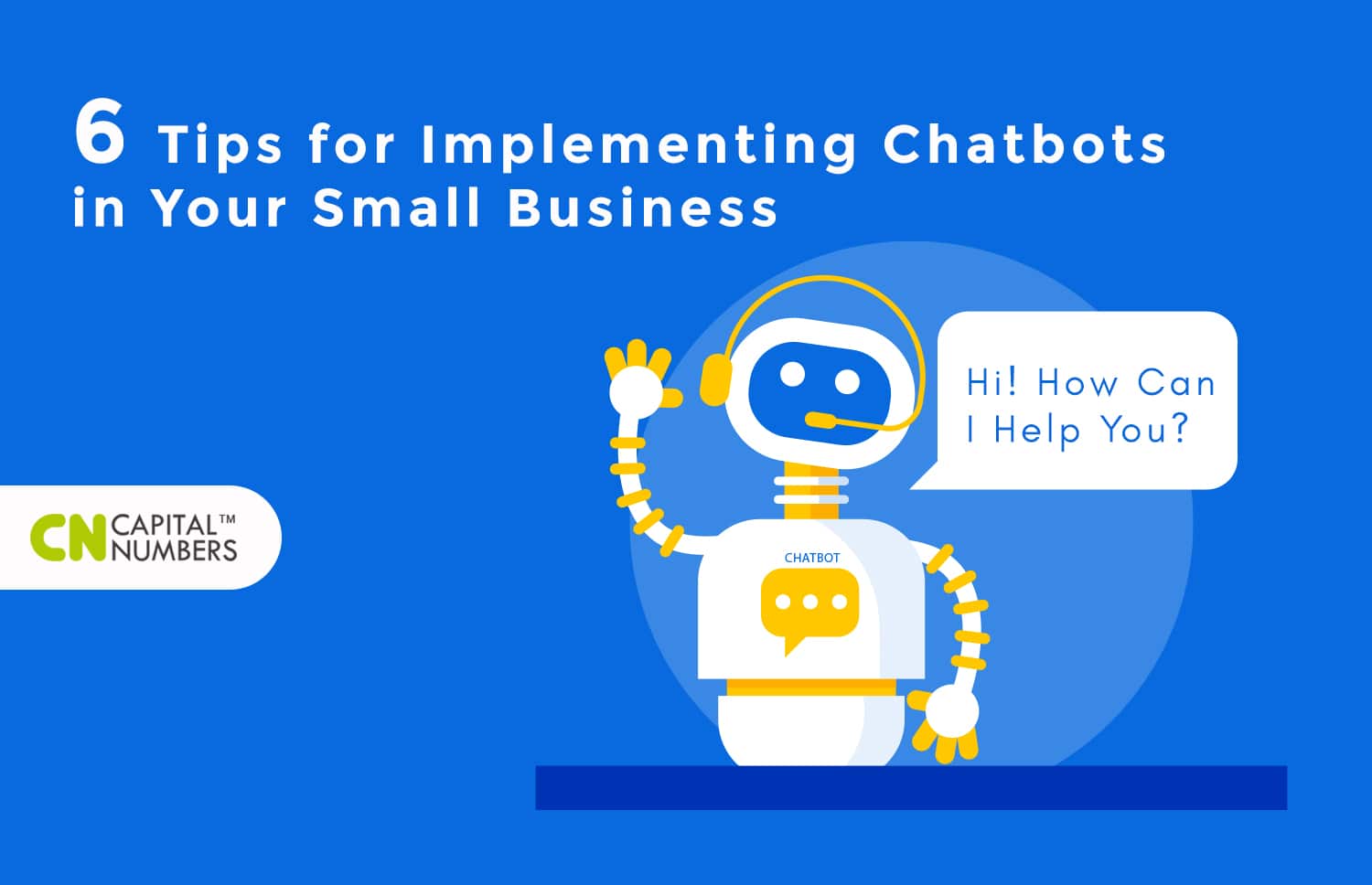6 Tips for Implementing Chatbots in Your Small Business
Table of Contents
With the emerging technology, Chatbots have become more popular as compared to websites and mobile applications. Since few years, Chatbots are in trend and hence, widely implemented by several organisations in order to automate most of the tasks. For example, providing advanced customer care, and endorsing products by pushing deals and promotions.
First, let’s find out what Chatbots are. The Chatbots can be defined as a computer program or any software which is designed with the intention to automate multiple tasks. One of the most common implementations of Chatbots can be viewed in Facebook messenger. Another example of Chatbots is Google Assistant. Nowadays, Chatbots are considered the most common way to reach directly the end consumers.
If you are thinking to implement Chatbots in your application or website, then you are in the right place. In this article, we will provide you with some tips which will help you during the implementation of Chatbots.
Follow the tips which are given below for implementing bots in your small business:
1. Define the goals of your business
Whenever any customer or client visits your website or uses your application, it means that it wants to explore and know about your business. They want to know about the services you offer, and the products you provide. You might have displayed all the business information in your profile but it is possible that those visitors may have some questions. Most organisations hire professionals for this purpose.
You can automate such a task with the help of a fully functional Chatbot. It must be able to define all the objectives (goals) of your business and answer all the business-related queries of the clients. This will save a lot of time and money as well. With the implementation of such Chatbots, there is no need to hire extra personnel for this purpose.
2. Define the requirement of the client
The Chatbot must be able to express the requirements of the clients or customers. You need to keep this point in mind while implementing Chatbot. Try to assume that you are the customer itself, and then you can guess what needs to be added or improved in the Chatbot. You can also put some effective greeting or welcome messages.
Requirements may differ according to the type of customer. For example, a Business-to-business (B2B) customer will have different queries as compared to Business-to-consumer (B2C) customers. The customers may have some questions related to the login process or sign out process. The Chatbot must be able to address such queries.
3. Evaluate and optimise your Chatbot
As you know that Chatbot is a type of tool, and tools are required to be analysed and optimised on a regular basis. Similarly, you can enhance the functionalities and features of your Chatbot by making continuous improvement. You need to evaluate and optimise the performance of the Chatbot on a regular basis.
As you know that technology is emerging day-by-day, hence you need to check whether the underlying technology of the Chatbot needs to be updated or not. Try to install patches in order to remove bugs and errors.
Continuous evaluation and optimisation will improve the performance of the Chatbot. As a result, it will also increase the reflection of your brand or business.
4. Unique Chatbot name
Make sure that your Chatbot does not get lost in the era of technology. Try to provide a unique name to your Chatbot which must be different from the existing or traditional Chatbot names. If you want your Chatbot to be found online among others, try to give a different name. Also, make sure that the customers do not face any problem while searching for your Chatbot. A simple and easy to use Chatbot is one of the easiest and innovative ways to reach your customers.
5. Track other Chatbots to stay updated
Whenever we talk about technology, there is no end point. There is a lot of things that you learn with the time. Similarly, the Chatbots are a digital tool and you can learn how to improve them by tracking the Chatbots of other companies or enterprises. You can track or monitor the progress of Chatbot of other companies like:
- What type of technology they are using
- How they update their content
- What are the features which attract customers
- What are the things that they are doing well
- What are the mistakes that they are performing
You need to find out the answers to all the above-mentioned questions. Further, you can implement the output in your Chatbot.
6. Test your bot and track your success as well as failure
The best way to find out mistakes is testing. Testing helps in determining the faulty areas that need to be corrected. It is the best way to learn. Try to test as much as possible with thousands of users. In addition to this, try to confuse Chatbot with multiple and different types of questions. Note down the observations in each case.
Try to note each reply that Chatbot does. Later, categorise the bugs, errors or glitches out of the observations and then, eliminate those errors. Make sure that the interaction between your Chatbot and the client must be a natural conversation. It should be able to answer the questions of the audience. Try to keep the conversation short and simple. Avoid using jargons while communicating with the customers.
After successful testing, it is the time when you can monitor the success rate as well as failure rate. You can take help from Google Analytics and some other tools too. You can also track how fast the pages are loaded on your website with the help of Google Analytics.














